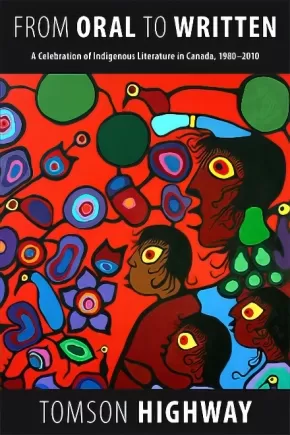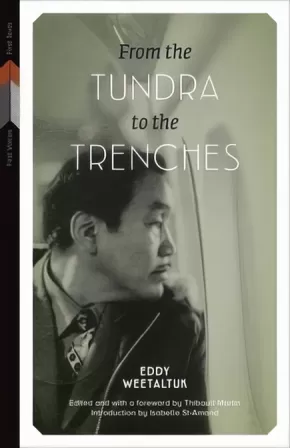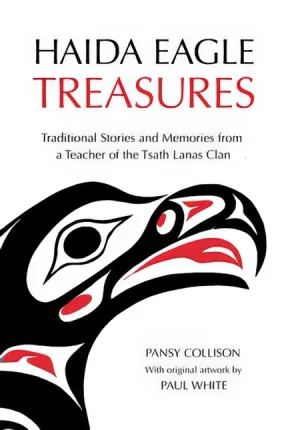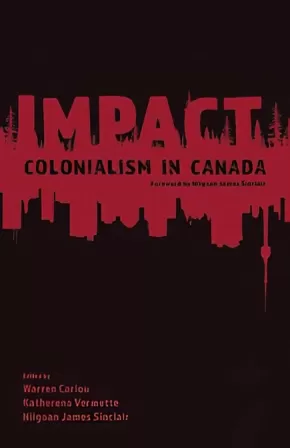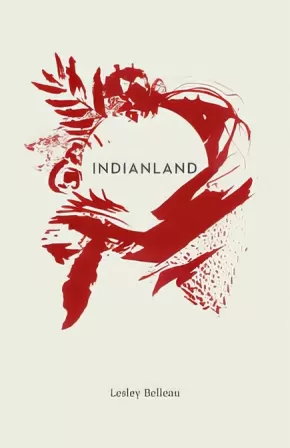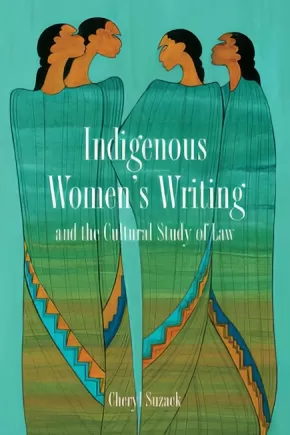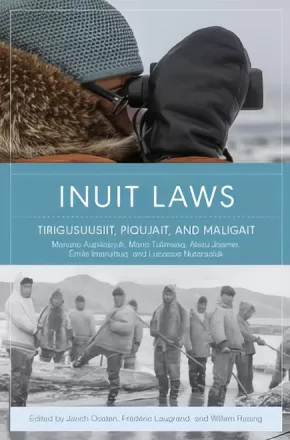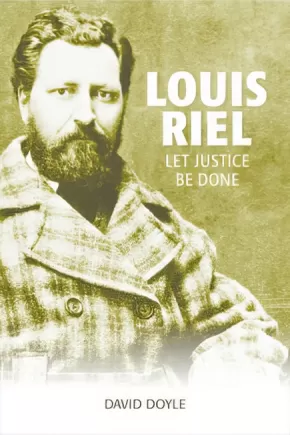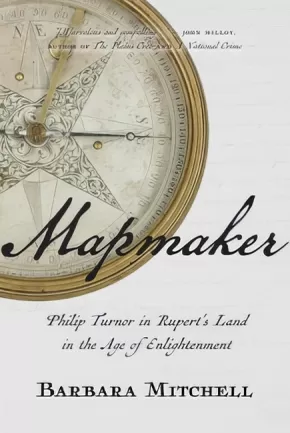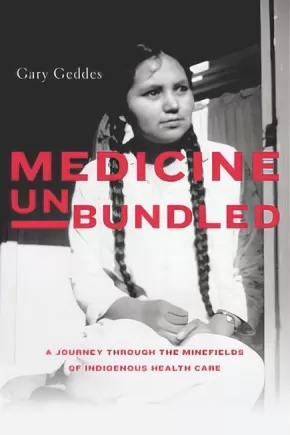
Indigenous Studies
796
-
810
of
1030 Results;
Sort By
Go To
of 69
From Oral to Written: A Celebration of Indigenous Literature in Canada, 1980-2010
$35.00
Format:
Paperback
Text Content Territories:
Indigenous Canadian;
ISBN / Barcode: 9781772011166
Synopsis:
Synopsis:
Aboriginal Canadians tell their own stories, about their own people, in their own voice, from their own perspective.
If as recently as forty years ago there was no recognizable body of work by Canadian writers, as recently as thirty years ago there was no Native literature in this country. Perhaps a few books had made a dent on the national consciousness: The Unjust Society by Harold Cardinal, Halfbreed by Maria Campbell, and the poetry of Pauline Johnson and even Louis Riel. Now, three decades later, Native people have a literature that paints them in colours that are psychologically complex and sophisticated. They have a literature that validates their existence, that gives them dignity, that tells them that they and their culture, their ideas, their languages, are important if not downright essential to the long-term survival of the planet.
Tomson Highway’s From Oral to Written is a study of Native literature published in Canada between 1980 and 2010, a catalogue of amazing books that sparked the embers of a dormant voice. In the early 1980s, that voice rose up to overcome the major obstacle Native people have as writers: they are not able to write in their own Native languages, but have to write in the languages of the colonizer, languages that simply cannot capture the magic of Native mythology, the wild insanity of Trickster thinking. From Oral to Written is the story of the Native literary tradition, written – in multiple Aboriginal languages, in French, and in English – by a brave, committed, hard-working, and inspired community of exceptional individuals – from the Haida Nation on Haida Gwaii to the Mi’kmaq of Nova Scotia’s Cape Breton Island.
Leading Aboriginal author Tomson Highway surveys the first wave of Native writers published in Canada, highlighting the most gifted authors and the best stories they have told, offering non-Native readers access to reconciliation and understanding, and at the same time engendering among Native readers pride in a stellar body of work.
Reviews
“We gratefully acknowledge the work of those artists who have come before, and those that continue, building bridges across our cultures through their authentic words. Tomson Highway’s readings each demonstrate that within our stories, we pass along our teachings and we build upon the strength inside each one of us. We are arriving. Back to our lands, back to our stories, back to our truths, unwrapping old words and sharing wisdom. We, are coming home.” —Terri Mack, Strong Nations
“A rich compilation of Indigenous literature that will be a gift for Canadian school curriculums, also well suited for those Canadians in search of understanding and reconciliation. More importantly this book is what Indigenous people need because, like me, they will discover their lives in the many stories. If I had this as a teenager, I would have understood that I was not alone in the darkness I lived. I would have seen that others found a way out. Bravo, Tomson Highway!” ―Bev Sellars, author of They Called Me Number One: Secrets and Survival at an Indian Residential School and Price Paid: The Fight for First Nations Survival
Educator Information
Recommended in the Canadian Indigenous Books for Schools 2019-2020 resource list as a Teacher Resource.
Additional Information
|
From the Tundra to the Trenches
$24.95
Editors:
Format:
Paperback
Text Content Territories:
Indigenous Canadian; Inuit;
ISBN / Barcode: 9780887558221
Synopsis:
Synopsis:
“My name is Weetaltuk; Eddy Weetaltuk. My Eskimo tag name is E9-422.” So begins From the "Tundra to the Trenches." Weetaltuk means “innocent eyes” in Inuktitut, but to the Canadian government, he was known as E9-422: E for Eskimo, 9 for his community, 422 to identify Eddy.
In 1951, Eddy decided to leave James Bay. Because Inuit weren’t allowed to leave the North, he changed his name and used this new identity to enlist in the Canadian Forces: Edward Weetaltuk, E9-422, became Eddy Vital, SC-17515, and headed off to fight in the Korean War. In 1967, after fifteen years in the Canadian Forces, Eddy returned home. He worked with Inuit youth struggling with drug and alcohol addiction, and, in 1974, started writing his life’s story. This compelling memoir traces an Inuk’s experiences of world travel and military service. Looking back on his life, Weetaltuk wanted to show young Inuit that they can do and be what they choose.
Reviews
“Endlessly interesting; an account of a traditional way of life now lost, a gripping first-hand account of a front-line soldier during the war, and an honest account of a young man’s adventures and misadventures. It is to all our benefit that it has, at last, found its way into print." — Michael Melgaard, The National Post
“Tender, honest, and often raw, Weetaltuk’s storytelling is masterful, engrossing, and deeply human. He has imbued his writing with a philosophical nuance that is characteristically Inuit: very subtle, yet profound." — Siku Allooloo, The Malahat Review
“Recounts the adventures of Inuk veteran Eddy Weetaltuk, from his early life in the North to his escape to the south under an assumed identity, to his enlistment in the Canadian Forces, which took him across the Canadian West, to Japan and Germany, and into battle in Korea. Adopting the name Eddy Vital was necessary in 1951 because the federal government restricted the movement of Inuit people. Through his alias, Weetaltuk was able to see the world; in the army, he experienced equality and respect – all the while never forgetting his true identity as an Inuk. The publication history of From the Tundra to the Trenches is itself a four-decades-long saga of many twists and turns. That it now finds English publication (after first appearing in French and German) owes to the author’s conviction that his life story be read as a work of literature with the makings of a bestseller. Eddy Weetaltuk was right.”— Jade Colbert, The Globe and Mail
“For those interested in Inuit culture it offers the rare and valuable perspective of an Inuk looking out from his culture at the world rather than the world looking in. “ — P. T. Sherrill, CHOICE
Educator & Series Information
From the Tundra to the Trenches is the fourth book in the First Voices, First Texts series, which publishes lost or underappreciated texts by Indigenous writers. This new English edition of Eddy Weetaltuk’s memoir includes a foreword and appendix by Thibault Martin and an introduction by Isabelle St-Amand.
Additional Information
280 pages | 5.50" x 8.50" | 25 colour illustrations, 3 b&w photographs, bibliography
Haida Eagle Treasures: Traditional Stories and Memories from a Teacher of the Tsath Lanas Clan
$24.95
Artists:
Format:
Paperback
Text Content Territories:
Indigenous Canadian; First Nations; Haida; Eagle Clan (Ts'aahl);
ISBN / Barcode: 9781550597486
Synopsis:
Synopsis:
Take a journey into the heart of Haida culture as it is lived and experienced by an extraordinary woman of the Tsath Lanas Eagle Clan. Pansy Collison, a Haida woman born and raised in Old Massett on Haida Gwaii, tells stories of her clan and community, as well as personal narratives about her history and family. Haida Eagle Treasures embodies a strong Haida woman’s voice, offering a rare glimpse inside Haida culture. Each story and memory is a treasure that captures part of the beauty of the Haida worldview and way of life.
Now retired, Pansy taught for 23 years at elementary, secondary, and college levels. From these experiences, she describes some of the challenges and contradictions of living between two worlds. Pansy’s teaching skills, artistic talents, and political affiliations keep her involved in politics and education on Haida Gwaii.
Thirteen original illustrations by Pansy’s brother, Paul White, a gifted artist, teacher, pole carver and designer, provide the guideposts within Haida Eagle Treasures.
Educator Information
Recommended in the Canadian Indigenous Books for Schools 2019-2020 resource list as being useful for grades 8-12 for English Language Arts and Social Studies.
Caution: use of the term "Native" throughout.
Additional Information
244 pages | 6.00" x 9.00" | 2nd Edition
Impact: Colonialism in Canada
$12.00
Format:
Paperback
Text Content Territories:
Indigenous Canadian;
Grade Levels: 12; University/College;
ISBN / Barcode: 9781927849293
Synopsis:
Synopsis:
A collection of fiction, poetry, essays and creative non-fiction, this anthology features works by over 20 Indigenous Canadian writers. The book focuses on the effects of colonialism in Canada from both historical and contemporary perspectives.
"These stories are rich in geographies Indigenous peoples journey through today; on streets, in cities, and into the future. These stories will make you think, cry, and heal." —Niigaanwewidam James Sinclair, Editor
Reviews
"Impact: Colonialism in Canada presents writings that are often challenging, thought-provoking, and at times, gut-wrenching. The collection is a testament to strength and resiliency and the potential for healing, both within the Indigenous and non-Indigenous communities. But, it is not easy reading; it demands considerable insight, open-mindedness, and an understanding of an historical concept (i.e. colonialism), all of which point to the book’s being read and/or studied by students in the upper grades of high school. It’s certainly a work that would be a fine reference in a high school library collection, and teachers would find it to be an excellent supplemental text for the study of Aboriginal writers, as well as Canadian history, particularly as a reflection of the impact of colonialism upon Canada’s Indigenous peoples. Highly Recommended." - Joanne Peters, CM Magazine
Educator Information
Recommended for ages 17+
Additional Information
198 pages | 5.50" x 8.50"
Indianland
$18.95
Format:
Paperback
Text Content Territories:
Indigenous Canadian; First Nations; Anishinaabeg; Ojibway;
ISBN / Barcode: 9781894037921
Synopsis:
Synopsis:
Indianland is a rich and varied poetry collection. The poems are written from a female and Indigenous point of view and incorporate Anishinaabemowin throughout. Time is cyclical, moving from present-day back to first contact and forward again. Themes of sexuality, birth, memory, and longing are explored, images of blood, plants (milkweed, yarrow, cattails), and petroglyphs reoccur, and touchstone issues in Indigenous politics are addressed (Elijah Harper, Murdered and Missing Indigenous Women, forced sterilizations, Oka).
Educator Information
Recommended in the Canadian Indigenous Books for Schools 2019-2020 resource list as being useful for grades 11 and 12 for these subjects: English Language Arts, Media Studies, and Social Studies.
This work includes sexual content, references to rape, and mature content.
Additional Information
80 pages | 5.50" x 8.50"
Indigenous Business in Canada: Principles and Practices
$34.95
Editors:
Format:
Paperback
Grade Levels: University/College;
ISBN / Barcode: 9781771085908
Synopsis:
Synopsis:
Students who study business in university are not likely to hear about or discuss examples of Indigenous business successes from across the country. Rarely would one see references to Aboriginal communities, let alone examples of them growing multi-million dollar businesses and partnering to lead innovative economic development projects that positively impact the national economy. Resources are scarce and inadequate, an oversight that is to our detriment.
Somewhere between a textbook and a book of collected essays, this collection of articles is an effort to build on and share the research of Aboriginal practitioners and scholars working in their respective fields. Where possible we share not only concepts, but also the voices of Aboriginal leaders, officials, Elders and other members of Aboriginal communities.
Indigenous Business in Canada addresses contemporary concerns and issues in the doing of Indigenous business in Canada, reveals some of the challenges and diverse approaches to business in Aboriginal contexts from coast to coast to coast, and demonstrates the direct impact that history and policy, past and present, have on business and business education.
Reviews
“Indigenous Business in Canada: Principles and Practices should serve as a conscious raiser for business education students and professionals working in housing, business, banking and other economic-development industries and support their ability to adapt to the growing importance of Aboriginal communities and business to the global economy.” -- Nelson & Waugh, Canadian Journal of Education, 2016
Educator Information
This textbook would be useful for courses in Business & Economics, Economic Development, Government & Business, and Indigenous Studies.
Additional Information
312 pages | 7.50" x 9.00
Edited by Keith G. Brown, Mary Beth Doucette, and Janice Esther Tulk.
Indigenous Women's Writing and the Cultural Study of Law
$31.95
Format:
Paperback
Text Content Territories:
Indigenous American; Indigenous Canadian;
Grade Levels: University/College;
ISBN / Barcode: 9781442628588
Synopsis:
Synopsis:
In Indigenous Women’s Writing and the Cultural Study of Law, Cheryl Suzack explores Indigenous women’s writing in the post-civil rights period through close-reading analysis of major texts by Leslie Marmon Silko, Beatrice Culleton Mosionier, Louise Erdrich, and Winona LaDuke.
Working within a transnational framework that compares multiple tribal national contexts and U.S.-Canadian settler colonialism, Suzack sheds light on how these Indigenous writers use storytelling to engage in social justice activism by contesting discriminatory tribal membership codes, critiquing the dispossession of Indigenous women from their children, challenging dehumanizing blood quantum codes, and protesting colonial forms of land dispossession. Each chapter in this volume aligns a court case with a literary text to show how literature contributes to self-determination struggles. Situated at the intersections of critical race, Indigenous feminist, and social justice theories, Indigenous Women’s Writing and the Cultural Study of Law crafts an Indigenous-feminist literary model in order to demonstrate how Indigenous women respond to the narrow vision of law by recuperating other relationships–to themselves, the land, the community, and the settler-nation.
Additional Information
208 pages | 6.02" x 8.95"
Inuit Laws: Tirigusuusiit, Piqujait, and Maligait
$27.95
Editors:
Format:
Paperback
Text Content Territories:
Indigenous Canadian; Inuit;
Grade Levels: University/College;
ISBN / Barcode: 9781897568507
Synopsis:
Synopsis:
Through the voices of Inuit elders, this book is a critical and cultural-historical engagement with the traditional concepts of tirigusuusiit, piqujait, and maligait.
These three concepts refer to what had to be followed, done, or not done in Inuit culture. Although these terms are now often used as equivalents to modern Western notions of law, this work examines how Inuit and Western concepts of law derive from completely different cultural perspectives. Through the guiding concepts of maligait, piqujait, and tirigusuusiit, this book transcends discussions of law, examining how these Inuit concepts are embedded in social and cosmic relationships.
This unique book examines these challenging concepts through the knowledge and stories of Inuit elders and evokes a unique experience whereby Western knowledge—embodied in the participating scholars—works to describe and understand Inuit knowledge and models of traditional law. This is a new and updated edition of Interviewing Inuit Elders Vol. 2: Perspectives on Traditional Law.
Contributing Elders: Mariano Aupilaarjuk, Marie Tulimaaq, Akisu Joamie, Émile Imaruittuq, and Lucassie Nutaraaluk.
Additional Information
380 pages | 6.00" x 9.00" | 2nd Edition
Learning and Teaching Together: Weaving Indigenous Ways of Knowing into Education
$34.95
Format:
Paperback
Text Content Territories:
Indigenous Canadian;
ISBN / Barcode: 9780774829526
Synopsis:
Synopsis:
Across Canada, teachers unfamiliar with Aboriginal approaches to learning are seeking ways to respectfully weave Aboriginal content into their lessons. This book introduces an indigenist approach to education. It recounts how pre-service teachers immersed in a cross-cultural course in British Columbia began to practise Indigenous ways of knowing. Working alongside Indigenous wisdom keepers, they transformed earth fibres into a mural and, in the process, their own ideas about learning and teaching. By revealing how they worked to integrate Indigenous ways of knowing into their practice, this book opens a path for teachers to nurture indigenist cross-cultural understanding in their classrooms.
Reviews
"Teachers in British Columbia and throughout Canada who struggle with how to enact curriculum changes that incorporate Indigenous knowledge, history, and identity will find this book illuminating … in spite of the seemingly overwhelming challenges in making a space for Indigenous thought and experience, it can and must be done. The transformation has been happening and is continuing." — Michael Marker, BC Studies, no. 196, Winter 2017/18
"… Indigenous educators and allies will find this text inspirational, hopeful, and useful." — Alma M. O. Trinidad, School of Social Work, Portland State University, Great Plains Research, April 2018
Additional Information
260 pages | 6.00" x 9.00"
Little Athapapuskow: A Métis Love Story (4 in stock, Out of Print)
$20.00
Artists:
Format:
Paperback
Text Content Territories:
Indigenous Canadian; Métis;
ISBN / Barcode: 9781926795829
Synopsis:
Synopsis:
Little Athapapuskow is collection of poems named after a lake Guy Freedman grew up on near Flin Flon, Manitoba. They represent his efforts to challenge Catholicism and its complicity with the Confederation project, which dismantled the New Nation developing in the Canadian Northwest. The poems are organized into three parts—past, present, and future—and they address the inter-generational impacts of the Church on his family in relation to the doctrine of the Holy Trinity. This book is his love song to his home and to his country.
Educator Information
Recommended resource for Grades 10-12 English Language Arts and Social Studies.
Contains poems about the history of the Métis people, family, love, celebration of culture, colonialism, religion, violence.
Caution: Some poems contain strong language and mature subject matter, such as discussions of violence, alcoholism, and sexuality.
Additional Information
86 pages | 7.25" x 5.75 "
Louis Riel: Let Justice Be Done
$24.95
Format:
Paperback
Text Content Territories:
Indigenous Canadian; Métis;
Grade Levels: University/College;
ISBN / Barcode: 9781553804963
Synopsis:
Synopsis:
Louis Riel, prophet of the new world and founder of the Canadian province of Manitoba, has challenged Canadian politics, history and religion since the early years of Confederation. In Canada's most important and controversial state trial, Riel was found guilty of "high treason," sentenced to hang and executed on November 16, 1885. With 2017 being Canada's sesquicentennial of the initial Confederation of four British colonies, and with the question of reconciliation on the minds of many, the celebrations must recognize that the brutal execution of Louis Riel remains Canada's "great divide." Was the 1885 execution of Riel the hanging of a traitor? Or the legal murder of a patriot and statesman? Tried in a territorial court, Riel called out for justice, for an "inquiry into his career." To date, no such inquiry has been called. The spiritual and political father of the Métis nation and Western Canada remains branded a traitor to Canada.
In this imaginative re-enactment of his trial, Riel is finally given the opportunity to respond to his conviction for treason, offering his side of the story at Batoche and Red River.
Reviews
“In this era of reconciliation, Louis Riel: Let Justice Be Done is a tour de force. Exposing the combined pillars of racism and colonialism, Doyle assists in the decolonization of Canadian history during her sesquicentennial commemorations and celebrations.” — Venerable Dr. John A. (Ian) MacKenzie
“David Doyle’s advocacy, both in his writings and presentations, appropriates nothing from the Métis or their culture, rather it supplements it both for them and for all Canadians.” — George & Terry Goulet, authors of The Trial of Louis Riel
Additional Information
200 pages | 9.00" x 6.00" | 16 b&w photos
This book is creative nonfiction, a genre of writing that presents factually accurate narratives using literary style and technique (creativity).
Making Space for Indigenous Feminism - 2nd Edition
$35.00
Editors:
Format:
Paperback
Text Content Territories:
Indigenous;
Grade Levels: 12; University/College;
ISBN / Barcode: 9781552668832
Synopsis:
Synopsis:
The first edition of Making Space for Indigenous Feminism proposed that Indigenous feminism was a valid and indeed essential theoretical and activist position, and introduced a roster of important Indigenous feminist contributors. This new edition builds on the success and research of the first and provides updated and new chapters that cover a wide range of some of the most important issues facing Indigenous peoples today: violence against women, recovery of Indigenous self-determination, racism, misogyny and decolonization. Specifically, new chapters deal with Indigenous resurgence, feminism amongst the Sami and in Aboriginal Australia, neoliberal restructuring in Oaxaca, Canada’s settler racism and sexism, and missing and murdered Indigenous women and girls in Canada.
Written by Indigenous feminists and allies, this book provides a powerful and original intellectual and political contribution demonstrating that feminism has much to offer Indigenous women, and all Indigenous peoples, in their struggles against oppression.
Reviews
“Making Space for Indigenous Feminism is an essential resource that places gender justice at the core of our analyses of colonization and decolonization. What we learn is urgent: without addressing the systemic and symbolic character of the gendered violence that Indigenous women, girls, two-spirit, trans, and queer folks disproportionately face, decolonization will remain a man-made, colonial sham.” — Glen Coulthard, First Nations and Indigenous Studies, UBC
“This path-breaking collection brings together leading and emerging voices in the field, presenting critical innovative research that reminds us of the need for a consistent application of feminist analytic tools to understand colonialism and patriarchy as mutually constitutive and reinforcing forces. This collection is essential as an emancipatory tool for decolonization and Indigenous resurgence.” — Heidi Kiiwetinepinesiik Stark, University of Victoria
Additional Information
256 pages | 6.00" x 9.00"
Mapmaker: Philip Turnor in Rupert's Land in the Age of Enlightenment
$39.95
Format:
Hardcover
Text Content Territories:
Indigenous Canadian; First Nations; Cree (Nehiyawak);
Grade Levels: University/College;
ISBN / Barcode: 9780889775039
Synopsis:
Synopsis:
"[M]arvelous and compelling..." - John Milloy, author of The Plains Cree and A National Crime
As the first inland surveyor for the Hudson's Bay Company, Philip Turnor stands tall among the explorers and mapmakers of Canada. Accompanied by Cree guides and his Cree wife, Turnor travelled 15,000 miles by canoe and foot between 1778 and 1792 to produce ten maps, culminating in his magnum opus, a map that was the foundation of all northern geographic knowledge at that time. Barbara Mitchell's biography brings to life the man who taught David Thompson and Peter Fidler how to survey. In her search for Turnor's story, Mitchell discovers her own Cree-Orkney ancestry and that of thousands of others who are descendents of Turnor and his Cree wife.
Reviews
"Mitchell's work adds substantially to a deeper knowledge of Turnor, his life, his work, and to the extent possible, his character. It provides the first close study of his background, writings, career trajectory, and contributions to the mapping of North America." - Jennifer Brown, author of Strangers in Blood: Fur Trade Company Families in Indian Country
"Where books on Canada, indigenous life, exploration, or genealogy are favorites, this historical account is a must." - Henrietta Verma, Library Journal
"Mitchell shows the human side of map-making through reconstructions of Turnor's daily life ... The result is a wonderfully detailed and convincing portrait of early Canadian life in the era of Indigenous-European trade." - Lyle Dick, Canada's History
"Since the research material informing this biography was framed through the sensibilities of an eighteenth-century Englishman, there is very little reference to Turnor’s Cree wife. Mitchell, having only recently discovered her own Cree roots, is also unable to supply that Indigenous perspective in her journals. Her narrative ends with the appreciation that her lifelong self-identification as a British Canadian performs over her newer realization that she is also Cree. In her epilogue and her acknowledgements, she reaches out to her Cree heritage, stating simply, “I am listening.” - Beverley Haun, Canadian Literature: A Quarterly of Criticism and Review
Additional Information
352 pages | 6.25" x 9.25"
Medicine Unbundled: A Journey Through the Minefield of Indigenous Health Care
$22.95
Format:
Paperback
Text Content Territories:
Indigenous Canadian;
Grade Levels: University/College;
ISBN / Barcode: 9781772031645
Synopsis:
Synopsis:
A shocking exposé of the dark history and legacy of segregated Indigenous health care in Canada.
After the publication of his critically acclaimed 2011 book Drink the Bitter Root: A Writer’s Search for Justice and Healing in Africa, author Gary Geddes turned the investigative lens on his own country, embarking on a long and difficult journey across Canada to interview Indigenous elders willing to share their experiences of segregated health care, including their treatment in the "Indian hospitals" that existed from coast to coast for over half a century.
The memories recounted by these survivors—from gratuitous drug and surgical experiments to electroshock treatments intended to destroy the memory of sexual abuse—are truly harrowing, and will surely shatter any lingering illusions about the virtues or good intentions of our colonial past. Yet, this is more than just the painful history of a once-so-called vanishing people (a people who have resisted vanishing despite the best efforts of those in charge); it is a testament to survival, perseverance, and the power of memory to keep history alive and promote the idea of a more open and just future.
Released to coincide with the Year of Reconciliation (2017), Medicine Unbundled is an important and timely contribution to our national narrative.
Métis and the Medicine Line: Creating a Border and Dividing a People
$34.95
Format:
Paperback
Text Content Territories:
Indigenous Canadian; Métis;
Grade Levels: University/College;
ISBN / Barcode: 9780889773806
Synopsis:
Synopsis:
Métis and the Medicine Line is a sprawling, ambitious look at how national borders and notions of race were created and manipulated to unlock access to indigenous lands. It is also an intimate story of individuals and families, brought vividly to life by history writing at its best.
It begins with the emergence of the Plains Métis and ends with the fracturing of their communities as the Canada-U.S. border was enforced. It also explores the borderland world of the Northern Plains, where an astonishing diversity of people met and mingled: Blackfoot, Cree, Gros Ventre, Lakota, Dakota, Nez Perce, Assiniboine, Anishinaabes, Métis, Europeans, Canadians, Americans, soldiers, police, settlers, farmers, hunters, traders, bureaucrats.
In examining the battles that emerged over who belonged on what side of the border, Hogue disputes Canada's peaceful settlement story of the Prairie West and challenges familiar bromides about the "world's longest undefended border."
Sort By
Go To
of 69

